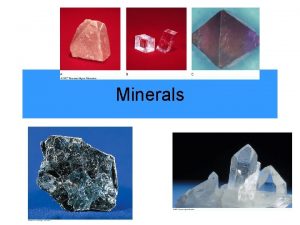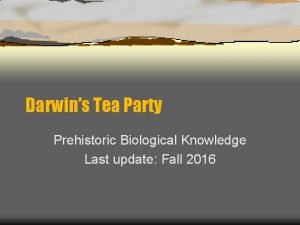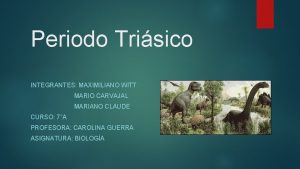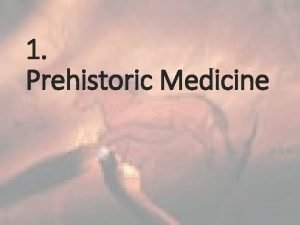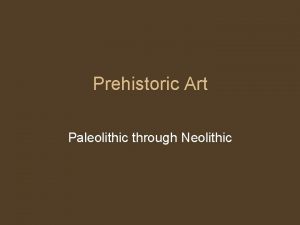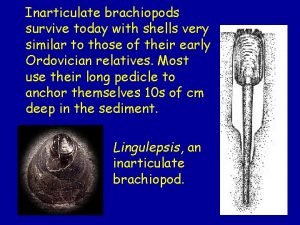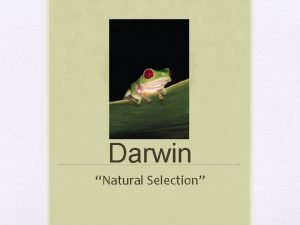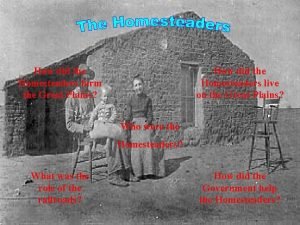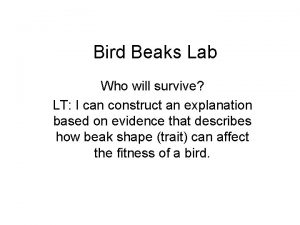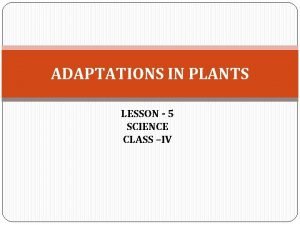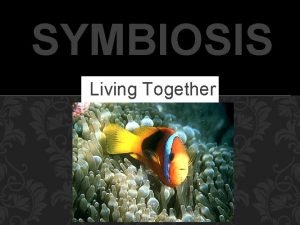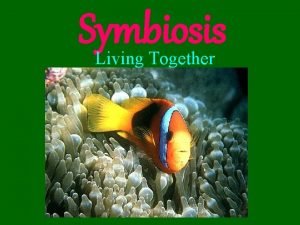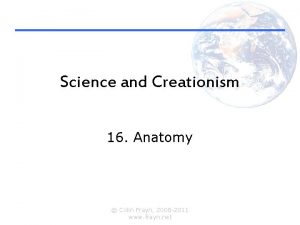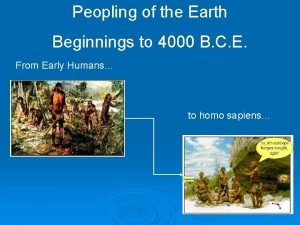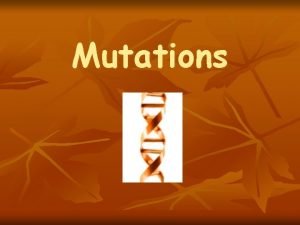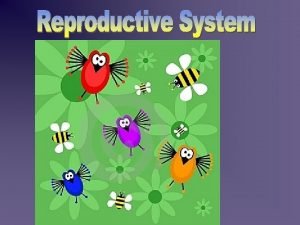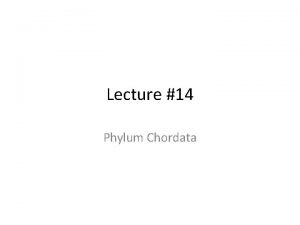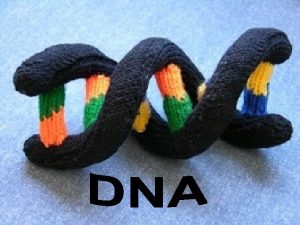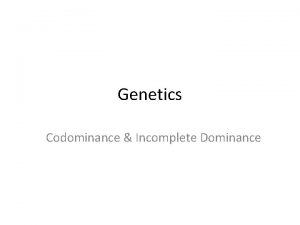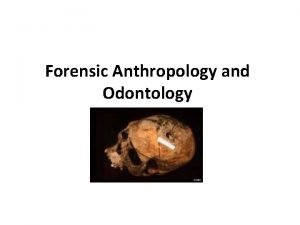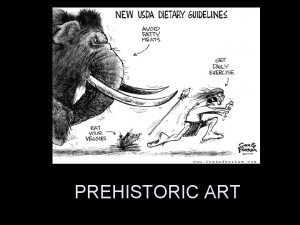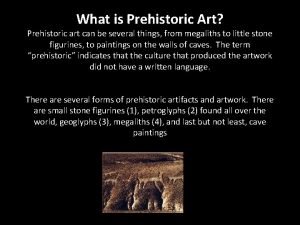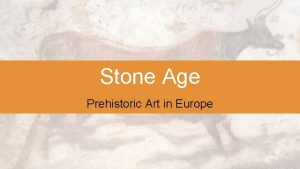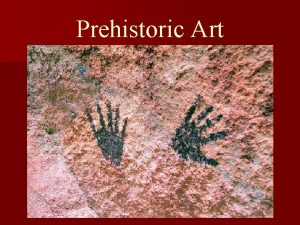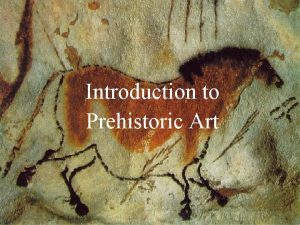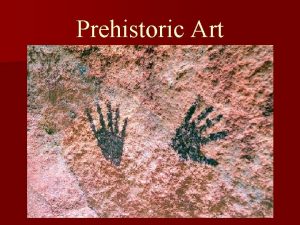Educational Resources Prehistoric Nidderdale Humans Survive Life in
















































































- Slides: 80

Educational Resources

Prehistoric Nidderdale: Humans Survive Life in Stone Age Nidderdale

Can you think why humans came to Nidderdale? Warmth Food Would early people find these things in Would early man find these things in Nidderdale? Water LETS FIND OUT! Shelter and safety Air

Food Where does our food come from today? Farm Factory Shops and supermarkets

How did Stone Age people in Nidderdale get food? Hunting Gathering

Animals hunted Animals were a main source of food for stone age people. They were here long before people. Humans may even have come to Nidderdale to hunt the animals who lived here. The animals they hunted depended on the climate and habitat at the time.

In warmer times, the first humans in Nidderdale would have seen a landscape like this. . . Lower valley Lush forests of mixed. Short grasses, deciduous and coniferous mosses, lichens. trees. Upper valley. . . or, in the colder times, . . . like this. . . ice grasses, mosses, lichens

Eating the animals that lived here would help humans survive. How do we know which animals? What evidence might there be to tell us about the animals that roamed the Nidderdale landscape?

These nearby caves give us the clues. . . bones! Chapel cave, Malham Animal bones found from 12, 000 -6, 000 years ago (Mesolithic) Victoria Cave, Ribblesdale Animal bones found from 130, 000 -11, 000 years ago (Paleolithic & Mesolithic) Stump Cross Caverns, Nidderdale Animal bones found from 200, 000 -35, 000 years ago (Paleolithic)

130, 000 years ago, it looked more like this: The climate was warm and the bones from the caves tell us that in our landscape there were: This is Nidderdale today Hippopotami Hyenas Rhinoceros

By around 33000 BCE, the plants, animals and landscape had changed completely The landscape was dominated by a huge Mammoth glacier which filled the valley. Red deer Arctic fox Bison Wolverine Grey wolves

Look carefully at the two pictures the artist has drawn of what Nidderdale might have looked like in Paleolithic a times. What are the differences in the landscape in the two different eras of the Paleolithic?

The animals in this area would have covered large distances looking for food

Reindeer Prehistoric reindeer bones On display at Nidderdale Museum

Bison

Wolverine Prehistoric wolverine jaw On display at Nidderdale museum

Arctic fox

Eurasian wolf

Woolly mammoth

Straight tusked elephant

Narrow nosed rhinocerous

Hippopotamus

Hyena

Wild boar

Which animals do you think lived in Nidderdale in the warmer inter-glacial times such as 130, 000 years ago Which animals do you think lived in Nidderdale in the cold harsh glacial climate of 30, 000 - 12, 000 years ago?

If our first ancestors arrived here looking for food, where do you think they lived? As the climate Mesolithic, they may They may have warmed shelteredininthe caves also have made temporary camps as home while they hunted.

Look carefully at the picture the artist has drawn of what Nidderdale might have looked like in Mesolithic times. What can you say about the way of life of Mesolithic people in Nidderdale from the picture?

Tools Stone age people in Nidderdale needed to use tools for all sorts of jobs. . but they only had a few materials to make them with. How do we know what they used? See ‘Nidderdale Rocks: How Nidderdale Began’ for ‘rock’ resources

What might have been the first tools used to hunt? Sticks, stones. . . and bones

How do you think hunters caught animals in Nidderdale before weapons were invented? Did they: Chase them off cliffs, such as Guise Cliff? Chase them into bogs, such as the boggy marshland at Ramsgill ? Throw rocks at them? Use dogs? See Early Hunting Methods Power. Point for cartoon ideas.

Examples of the earliest tools made out of flint have been found in Nidderdale. Do you know what this is? It is a Paleolithic hand axe. What do you think it was used for? One similar to this, is on display at the Skipton and Craven Museum in Skipton.

One like was found in the dry river bed at Goyden pot. Hand axes may have been used for: Cutting meat Scraping skins Chopping bone or wood Digging holes

Later, in the Mesolithic, people in Nidderdale attached handles to their stone axes Knapped stone axe, Nidderdale Museum Polished stone axe, Nidderdale Museum Can you see the difference between these two axe heads found in Nidderdale? Which was better? What do you notice about the colouring of the polished axe? This picture shows how a stone axe was attached to its handle.

In the Neolithic, people in the valley used improved axes which were first knapped and then polished. Stones were shaped when flakes were knocked off with another stone. The axes would be rubbed smooth on another harder stone.

Improved axes may have had a very important effect on the Nidderdale landscape. Can you think what that was?

Smaller, sharper weapons were also used: Humans in Nidderdale made sharp blades & arrow heads by breaking a hard stone called chert in a special way. See local chert cores & flakes at the Nidderdale Museum

Flint stone was even better for ‘knapping’ into sharp tools. This flint point is thought to be the most northern Paleolithic flint point found in the UK. . . so far! Photograph used with kind permission of The Dales Countryside Museum, Hawes This paleolithic flint was found in nearby Wensleydale This flint point is on display at the Dales Countryside Museum, Hawes, Wensleydale

Other small Stone Age blades have been found in the ground all over Nidderdale. . . Look at how they might have been made from larger pieces. . will you be the next person to find one? You can see blades like this at the Nidderdale Museum

Evidence suggests that people have comeage to Stone Nidderdale ever since. . evidence Look at all the stone tools found in Upper Nidderdale Axe head Cairn Flint / stone tools Possible hut circle Possible rock shelter Stone tools (Major Collins) Cup marked rock

These sharp blades of flint or chert, called microliths, could be set into wood or bone to make: arrows harpoons Saws and knives Q: What might they have used to glue them in? A: Resin – the sticky sap from trees

Animal bones were also cut into tools These are from Yorkshire, near Scarborough. Perhaps there are some still to be found in Nidderdale? What do you think they were for?

Other tools: Clue: slingshot This slingshot was found in Nidderdale Cc Jim Brophy Can you think what this might be? It is a sling, a weapon used to hurl stones at high speed. There is some evidence that this might have been used in Stone Age Nidderdale.

How else might they have hunted in Nidderdale? This barbed harpoon point was used in the Yorkshire Dales 11. 000 years ago in Mesolithic times. It was found in a cave nearby. With a harpoon. It may have been attached with two other points like this. It is made from reindeer bone and would have been attached to a wooden shaft to catch fish, birds or other animals.

They may also have used fish hooks and string. What do you think prehistoric fish hooks were made of? They were usually made of wood or bone. Prehistoric string has been found which is made from plants: honeysuckle, nettles and wild clematis. Stone age fish hooks have not been found in Nidderdale yet, but there is evidence of their use in Europe. . . so we’ll keep looking!

What do you think this object is? It is a fish trap Mesolithic fish traps have been found in parts of Europe including Ireland How do you think it worked? Fish swim in, but they cannot swim out.

These fish are all native to the Nidd Salmon Grayling Eel Brown trout They have probably been fished here for thousands of years. Barbel

Hunting in Nidderdale – What is the evidence? The landscape and habitat Animal bones found Hunting tools found Carvings and paintings from elsewhere which show the importance of these animals to Stone Age people

Gathering What food might people have gathered in ‘Stone Age’ Nidderdale? . . . and how do we know?

Can you guess which of these things might have been gathered in Stone Age Nidderdale? "Prunus cerasus wisnia" by Alina Zienowicz Ala z - Own work. Licensed under CC BY-SA 3. 0 via Wikimedia Commons https: //commons. wikimedia. org/wiki/File: Prunus_cerasus_wisnia. JPG#/media/Fil e: Prunus_cerasus_wisnia. JPG

Some of these foods did not exist in Nidderdale in The Stone Age How do we know what would have been eaten?

We know which foods were eaten a long time ago because of the evidence. We look for the ‘P’s! POLLEN Evidence of pollen in the ground shows the plants alive at that time P PERSON Near property In pictures & paintings Evidence of food with or in a person at that time In poo PRESUMPTION We don’t always know if food was eaten, so we try and put facts together and use information from environment, climate and other places With possessions In pots

Animals gathered from the Nidderdale landscape (Fauna)

Think of the habitat of Nidderdale after the climate warmed. What creatures might there have been to eat? Snails Bees? Would bees really have been eaten in the Stone Age? Caterpillars

Well, what do you think this might be a picture of? The drawing was found in a cave in a wooded area of Spain. It was drawn 6000 -8000 years ago. What could this tell us?

Yes! It shows a ‘stone age’ person collecting honey. Bees would probably have thrived in the Nidderdale forests and moorlands. Honey and the grubs would have been be eaten by prehistoric people and thought to be sweet and delicious. Even the bees wax would have been used. . .

Ground nesting birds’ eggs would be easy to gather - we would never take these now! Black grouse Oyster catcher Common snipe Ring ouzel

Can you think of anything else that prehistoric people might have gathered to eat in Nidderdale? Frog spawn? Wood lice? Chicks?

Plants (Flora) Nidderdale plants would also have been collected and eaten. How do we know which ones? POLLEN P PERSON

How does the Pollen Record tell us which plants grew in Nidderdale a long time ago? Most plants make a kind of tiny dust called pollen. This is what makes some people sneeze in Spring and Summer. The pollen from many years ago can still be found and recorded. It can tell us a lot about plants and the climate Centuries ago.

The pollen dust is washed or blown off the plants. The plants and grasses die and another layer of soil is made. The pollen stays in the layers and the deeper pollen belongs to the plants alive many years ago.

An auger can be used to dig up old layers of earth. This might show evidence of plants living thousands of years ago. The pollen found tells us the plant types. Volunteers use an auger.

Do we already know any trees with berries that Stone Age people might have eaten? Elderberries Blackthorn berries Yes, some people eat these today & they are all in the pollen record from Mesolithic times too. Hawthorn berries Juniper berries Many berries are very poisonous. Never eat berries from plants yourself.

Do we know our Nidderdale trees? Elderberry Hawthorn Blackthorn (sloes) Juniper ?

Nuts and seeds Hazelnuts These nuts were thought to be a very important part of the ‘Stone Age’ diet. They can still be gathered from bushes and trees in Nidderdale. Do you recognise the nuts from a movie?

Oak tree Ash tree Acorns Ash keys Do you recognise these? Acorns and ash keys are very bitter to taste, but were probably gathered, cooked and eaten by Stone Age people in Nidderdale.

There is some evidence of wild apples in the Neolithic. Apples would have been very small and quite sour compared to today.

These trees did NOT exist in earliest STONE AGE Nidderdale Sweet Chestnut Brought here in the Neolithic Beech Both were probably brought here for their nuts They are not in the early pollen record. Thought to be introduced by the Romans

Berries on the ground in Stone Age Nidderdale Wild strawberry Bramble / blackberry Bilberry

Roots and wild plants Nettles are known to have been cooked by the early people of Britain. Dandelions are also edible. . . and were probably eaten by early humans in Nidderdale. The roots would be good winter food.

Many wild mushrooms are edible. Can you guess the name for each mushroom? Hedgehog fungus (grows on the ground) Wood ears (grow on Elder trees) Never eat mushrooms in the wild. Beefsteak fungus (grows mainly on Oak) Scarlet elf cups (grow on many types of dead wood)

Did you guess which of these things might have been gathered in Stone Age Nidderdale?

Signs of change So, there was a lot to hunt and gather in Paleolithic and Mesolithic Nidderdale and we have hunted and gathered food ever since. But in the later Mesolithic and into Neolithic times things slowly started to change. How do we know?

The clues: 1. New types of food appeared in pots and in the pollen record. 2. Less tree pollen. 3. New types of tools found. What do you think this tells us? ?

Here are some of the new plants of the Neolithic Flax seed Einkorn Flax Spelt Emmer wheat Barley Rye

Can you guess what was happening to our landscape? More clues. . . What might these things tell us about stone age people, food and the way our landscape was changing?

Image Credits We gratefully acknowledge the use of the following images in this document: Slide 7: Glacier: By Böhringer friedrich (Own work) [CC BY-SA 2. 5 (http: //creativecommons. org/licenses/by-sa/2. 5)], via Wikimedia Commons Birch woodland: Nigel Corby [CC BY-SA 2. 0 (http: //creativecommons. org/licenses/by-sa/2. 0)], via Wikimedia Commons Higher ground: Angus [CC BY-SA 2. 0 (http: //creativecommons. org/licenses/by-sa/2. 0)], via Wikimedia Commons Slide 9: Victoria Cave: Picture: https: //commons. wikimedia. org/wiki/File%3 AVictoria_Cave_-_geograph. org. uk_-_916244. jpg Raymond Knapman [CC BY-SA 2. 0 (http: //creativecommons. org/licenses/by-sa/2. 0)], via Wikimedia Commons Stump Cross Caverns: Picture: https: //commons. wikimedia. org/wiki/File%3 AStump_Cross_Caverns. _-_geograph. org. uk_-_220. jpg Paul Allison [CC BY-SA 2. 0 (http: //creativecommons. org/licenses/by-sa/2. 0)], via Wikimedia Commons Chapel Cave: By Stephen Oldfield, A Three Peaks ‘Up and Under’ - http: //oldfieldslimestone. blogspot. co. uk/2013/07/malham-tarn-vanishing-waters-andvisual. html Slide 14, 25: Reindeer: By Arild Vågen (Own work) [CC BY-SA 4. 0 (http: //creativecommons. org/licenses/by-sa/4. 0)], via Wikimedia Commons Reindeer in prehistoric art: "GLAM Ice Age 260" by Discott - Own work. Licenced under CC BY-SA 3. 0 via Wikimedia Commons https: //commons. wikimedia. org/wiki/File: GLAM_Ice_Age_260. jpg#/media/File: GLAM_Ice_Age_260. jpg Slide 15, 25: European bison: sylvia duckworth [CC BY-SA 2. 0 (http: //creativecommons. org/licenses/by-sa/2. 0)], via Wikimedia Commons Bison found at Montastruc in Southern France. In the British Museum: By Johnbod (Own work) [CC BY-SA 3. 0 (http: //creativecommons. org/licenses/bysa/3. 0)], via Wikimedia Commons Slide 16, 25: Wolverine: "Gulo gulo 01" by User: Matthias. Kabel - Own work. Licensed under CC BY 2. 5 via Wikimedia Commons https: //commons. wikimedia. org/wiki/File: Gulo_gulo_01. jpg#/media/File: Gulo_gulo_01. jpg The Wolverine pendant of Les Eyzies: Prehistoric drawing of a wolverine on pendant in the British Museum. An example of ice-age art from the Late Magdalenian, around 12, 500 years old Probably from the cave of Les Eyzies, Dordogne, France : By Johnbod (Own work) [CC BY-SA 3. 0 (http: //creativecommons. org/licenses/by-sa/3. 0)], via Wikimedia Commons Slide 17, 25: Arctic fox: "Alopex lagopus cub" by Mr. Ardo X. Meyer - http: //www. photolib. noaa. gov/animals/anim 0609. htm. Licensed under Public Domain via Wikimedia Commons - https: //commons. wikimedia. org/wiki/File: Alopex_lagopus_cub. jpg#/media/File: Alopex_lagopus_cub. jpg Slide 18, 25: European Grey Wolf in paleolithic cave art: Polychrome painting of wolf in the Font-de-Gaume cavern near Les Eyzies. Grey wolf: By Retron (Own work) [GFDL (http: //www. gnu. org/copyleft/fdl. html) or CC BY 3. 0 (http: //creativecommons. org/licenses/by/3. 0)], via Wikimedia Commons Slide 19, 25: Woolly mammoth: https: //upload. wikimedia. org/wikipedia/commons/a/a 3/Woolly_mammoth_%28 Mammuthus_primigenius%29__Mauricio_Ant%C 3%B 3 n. jpg By Mauricio Antón [CC BY 2. 5 (http: //creativecommons. org/licenses/by/2. 5)], via Wikimedia Commons

Image Credits We gratefully acknowledge the use of the following images in this document: Slide 19 (cont): Mammoth carved on ivory. png In 1864, Édouard Lartet found this engraving of a woolly mammoth on a piece of mammoth ivory in the Abri de la Madeleine cave in Dordogne, France. This was the first widely accepted evidence for the coexistence of humans with extinct animals, and the first known contemporary depiction of such a creature. [17] This is an illustration from the book Kameno doba by Jovan Zujovic (1856 -1936), published in Belgrade in 1893. The copyright of this book is expired and this image is in the public domain. Slide 20, 25: Straight tusked elephant: https: //upload. wikimedia. org/wikipedia/commons/2/27/Elephas-antiquus. jpg. By DFoidl (Own work) [CC BY 3. 0 (http: //creativecommons. org/licenses/by/3. 0)], via Wikimedia Commons. Life restoration of E. antiquus based on a skeletal depiction and the anatomy of E. maximus. Carving of straight-tusked elephant: Among the Vermelhosa Palaeolithic scratched figures in Portugal, an elephant head, or at least what it looks like an elephant head, stands out. It is thought to be a straight tusked elephant and NOT a woolly mammoth because of the shaped of the head and the lack of woolly fur. Slide 21, 25: Rhino cave art: https: //upload. wikimedia. org/wikipedia/commons/1/17/Rhinos_Chauvet_Cave. jpg See page for author [Public domain], via Wikimedia Commons. Rhino drawings from the Chauvet Cave in France. Slide 22: Hippo: "Hippopotamus amphibius" by Scott Harrison. Licensed under CC BY-SA 3. 0 via Wikimedia Commons https: //commons. wikimedia. org/wiki/File: Hippopotamus_amphibius. JPG#/media/File: Hippopotamus_amphibius. JPG Hippo or Rhino figures and spirals by: By Fondazione Passaré, CC BY-SA 3. 0, https: //commons. wikimedia. org/w/index. php? curid=29167134. Rock art found in Algeria from the early hunting period. . Slide 23, 25: Hyena: "Hyene amneville" by Emmanuel FAIVRE. Licensed under CC BY-SA 3. 0 via Wikimedia Commons https: //commons. wikimedia. org/wiki/File: Hyene_amneville. JPG#/media/File: Hyene_amneville. JPG Chauvet cave prehistoric drawing of a hyena: https: //upload. wikimedia. org/wikipedia/commons/0/04/20%2 C 000_Year_Old_Cave_Paintings_Hyena. png By Carla Hufstedler [CC BY-SA 2. 0 (http: //creativecommons. org/licenses/by-sa/2. 0)], via Wikimedia Commons Slide 24, 25: Trotting boar: Altamira, boar. JPG Page URL: https: //commons. wikimedia. org/wiki/File%3 AAltamira%2 C_boar. JPG File url: https: //upload. wikimedia. org/wikipedia/commons/3/31/Altamira%2 C_boar. JPG By HTO (Own work (own photo)) [Public domain], via Wikimedia Commons Slide 31, 33: Lynford Hand Axe By José-Manuel Benito Alvarez (Own work) [CC BY-SA 4. 0 (http: //creativecommons. org/licenses/by-sa/4. 0)], via Wikimedia Commons and "Neolithic stone axe with handle ehenside tarn british museum" by JMiall - Own work. Licensed under CC BY-SA 3. 0 via Commons Slide 34: Gif of axe-knapping: By José-Manuel Benito Álvarez, CC BY-SA 2. 5, https: //commons. wikimedia. org/w/index. php? curid=1519080 Slide 38: "Microburin technique" by José-Manuel Benito - http: //commons. wikimedia. org/wiki/Category: Mesolithic_burins. Licenced under CC BY-SA 2. 5 via Wikimedia Commons - https: //commons. wikimedia. org/wiki/File: Microburin_technique. gif#/media/File: Microburin_technique. gif

Image Credits We gratefully acknowledge the use of the following images in this document: Slide 40: Harpoon with microliths: José-Manuel Benito Álvarez [CC BY-SA 2. 5 (http: //creativecommons. org/licenses/by-sa/2. 5)], via Wikimedia Commons Other illustrations: Akkermans & Scwartz – Archaeology of Syria Slide 41: Harpoons, Star Carr: By Jonathan Cardy (Own work) [CC BY-SA 3. 0 (http: //creativecommons. org/licenses/by-sa/3. 0)], via Wikimedia Commons Slide 42: A sling found in the Marquesas Islands. Photo reproduced from the British Museum Image Service, available at http: //www. britishmuseum. org/research/collection_online/collection_object_details. aspx? object. Id=489801&part. Id=1&search. Text=Sling&page=1 Attitudes Towards and Use of the Sling in Late Iron Age Britain David Swan, Department of Classics and Ancient History, University of Warwick "Sling bullets clay and stone" by No machine-readable author provided. Gaius Cornelius assumed (based on copyright claims). - No machine-readable source provided. Own work assumed (based on copyright claims). . Licensed under Public Domain via Commons https: //commons. wikimedia. org/wiki/File: Sling_bullets_clay_and_stone. JPG#/media/File: Sling_bullets_clay_and_stone. JPG Slide 44: Photo of honeysuckle string in slide 44: Julia Sharpley Sketch of Prehistoric_fishing_hooks_Science_Vol 5_No 120_p 415. JPG by W. M. Beauchamp (Science (journal) Vol. 5, No. 120 p. 415) [Public domain], via Wikimedia Commons Slide 45: Mesolithic fish trap. By Daderot (Own work) [CC 0], via Wikimedia Commons Oakland Museum of California. Sketch of fish trap and fish: Julia Sharpley. Slide 46: Grayling: By High Plains Grifter (Own work) [CC BY-SA 4. 0 (http: //creativecommons. org/licenses/by-sa/4. 0)], via Wikimedia Commons Brown trout - By Zouavman Le Zouave (Own work) [CC BY-SA 3. 0 (http: //creativecommons. org/licenses/by-sa/3. 0)], via Wikimedia Commons Barbel - By Paolo Neo [Public domain], via Wikimedia Commons Salmon - By dnak [CC BY 2. 0 (http: //creativecommons. org/licenses/by/2. 0)], via Wikimedia Commons Eel – Anguilla anguilla With consent of the photographer Ron Offermans under wikimedia creative commons license Slide 49: Cherry photo: "Prunus cerasus wisnia" by Alina Zienowicz Ala z - Own work. Licensed under CC BY-SA 3. 0 via Wikimedia Commons https: //commons. wikimedia. org/wiki/File: Prunus_cerasus_wisnia. JPG#/media/File: Prunus_cerasus_wisnia. JPG Slide 53: English snail - By macrophile on Flickr [CC BY 2. 0 (http: //creativecommons. org/licenses/by/2. 0)], via Wikimedia Commons Bundle of english caterpillars – Used under creative commons license. Andrew Smith. Species of small Ermine Moth Bees nesting in the hollow of a tree: Trevor Rickard [CC BY-SA 2. 0 (http: //creativecommons. org/licenses/by-sa/2. 0)], via Wikimedia Commons Honey bee: By Bob Peterson [CC BY-SA 3. 0 (http: //creativecommons. org/licenses/by-sa/3. 0)], via Wikimedia Commons Wild comb with larvae clearly visible in each cell: By Thylagene (Own work) [CC BY-SA 3. 0 (http: //creativecommons. org/licenses/by-sa/3. 0) or GFDL (http: //www. gnu. org/copyleft/fdl. html)], via Wikimedia Commons Wild honeycomb: By This illustration was made by (User: Royonx) and released under the license(s) stated above. You are free to use it for any purpose as long as you credit me and follow the terms of the license. Example : © Michel Royon / Wikimedia Commons If you use this image outside of the Wikimedia projects, I would be happy to hear from you par courriel ( royonx gmail. com). Thanks ! Ce message en français (Own work) [GFDL (http: //www. gnu. org/copyleft/fdl. html) or CC BY-SA 3. 0 (http: //creativecommons. org/licenses/by-sa/3. 0)], via Wikimedia Commons

Image Credits We gratefully acknowledge the use of the following images in this document: Slide 53, 55 (cont): Wild honeycomb: By This illustration was made by (User: Royonx) and released under the license(s) stated above. You are free to use it for any purpose as long as you credit me and follow the terms of the license. Example : © Michel Royon / Wikimedia Commons If you use this image outside of the Wikimedia projects, I would be happy to hear from you par courriel ( royonx gmail. com). Thanks ! Ce message en français (Own work) [GFDL (http: //www. gnu. org/copyleft/fdl. html) or CC BY-SA 3. 0 (http: //creativecommons. org/licenses/by-sa/3. 0)], via Wikimedia Commons Slide 54: By fr: Utilisateur: Achillea [GPL (http: //www. gnu. org/licenses/gpl. html)], via Wikimedia Commons Slide 55: Jar: by Staff or representatives of Harrogate Museums and Arts service [CC BY-SA 4. 0 (http: //creativecommons. org/licenses/by-sa/4. 0)], via Wikimedia Commons Bees nesting in the hollow of a tree: Trevor Rickard [CC BY-SA 2. 0 (http: //creativecommons. org/licenses/by-sa/2. 0)], via Wikimedia Commons Wild comb with larvae clearly visible in each cell: By Thylagene (Own work) [CC BY-SA 3. 0 (http: //creativecommons. org/licenses/by-sa/3. 0) or GFDL (http: //www. gnu. org/copyleft/fdl. html)], via Wikimedia Commons Slide 56: Common Snipe - By Richard Crossley (The Crossley ID Guide Britain and Ireland) [CC BY-SA 3. 0 (http: //creativecommons. org/licenses/by-sa/3. 0)], via Wikimedia Commons Ring Ouzel - By Steve Garvie from Dunfermline, Fife, Scotland (Ring Ouzel male) [CC BY-SA 2. 0 (http: //creativecommons. org/licenses/by-sa/2. 0)], via Wikimedia Commons Ring Ouzel eggs: By Klaus Rassinger und Gerhard Cammerer, Museum Wiesbaden - Own work, CC BY-SA 3. 0, https: //commons. wikimedia. org/w/index. php? curid=36817327 Black grouse: By Francesco Veronesi from Italy [CC BY-SA 2. 0 (http: //creativecommons. org/licenses/by-sa/2. 0)], via Wikimedia Commons Black grouse eggs: © Copyright Alan Stewart and licensed for reuse under this Creative Commons Licence. Oystercatcher egg: © Copyright John Naisbitt and licensed for reuse under this Creative Commons Licence. Oystercatcher wikimedia: By Tony Hisgett from Birmingham, UK (Oystercatcher 1 Uploaded by tm) [CC BY 2. 0 (http: //creativecommons. org/licenses/by/2. 0)], via Wikimedia Commons Slide 57: Frog eggs: By Geoff Gallice from Gainesville, FL, USA (Frog eggs/tadpoles with fly) [CC BY 2. 0 (http: //creativecommons. org/licenses/by/2. 0)], via Wikimedia Commons Wood louse: By Pogrebnoj-Alexandroff (Own work) [CC BY 3. 0 (http: //creativecommons. org/licenses/by/3. 0)], via Wikimedia Commons Chicks: Lucataxi at Italian Wikipedia [GFDL (http: //www. gnu. org/copyleft/fdl. html) or CC BY 3. 0 (http: //creativecommons. org/licenses/by/3. 0)], via Wikimedia Commons Slide 59: By Gaudete [CC BY-SA 2. 5 Ladybird on pollen: (http: //creativecommons. org/licenses/by-sa/2. 5)], via Wikimedia Commons Microscope: By ben at Openclipart (Openclipart) [CC 0], via Wikimedia Commons Slide 61: Photos credit Louise Brown

Image Credits We gratefully acknowledge the use of the following images in this document: Slide 62: Hawthorn berries: Brian Robert Marshall [CC BY-SA 2. 0 (http: //creativecommons. org/licenses/by-sa/2. 0)], via Wikimedia Commons Blackthorn berries: CC BY-SA 3. 0, https: //commons. wikimedia. org/w/index. php? curid=337699 Elderberries - By Gary Houston (Own work) [CC 0], via Wikimedia Commons Juniper berries: John Tustin [CC BY-SA 2. 0 (http: //creativecommons. org/licenses/by-sa/2. 0)], via Wikimedia Commons Slide 63: Hawthorn tree: By Osioni (Own work) [Public domain], via Wikimedia Commons Bramble bush - Jonathan Billinger [CC BY-SA 2. 0 (http: //creativecommons. org/licenses/by-sa/2. 0)], via Wikimedia Commons Juniper tree - Sarah Mc. Guire [CC BY-SA 2. 0 (http: //creativecommons. org/licenses/by-sa/2. 0)], via Wikimedia Commons Blackthorn tree : Christine Matthews [CC BY-SA 2. 0 (http: //creativecommons. org/licenses/by-sa/2. 0)], via Wikimedia Commons Elderberry: By H. Zell (Own work) [GFDL (http: //www. gnu. org/copyleft/fdl. html) or CC BY-SA 3. 0 (http: //creativecommons. org/licenses/by-sa/3. 0)], via Wikimedia Commons
 Can we live without minerals
Can we live without minerals Nidd high school
Nidd high school Kyrene educational resources
Kyrene educational resources Open educational resources
Open educational resources Pesticide educational resources collaborative
Pesticide educational resources collaborative Prehistoric art notes
Prehistoric art notes Prehistoric paintings functions
Prehistoric paintings functions Prehistoric eras timeline
Prehistoric eras timeline Trisico
Trisico Ancient art 1 500 00 bc-2 000bc
Ancient art 1 500 00 bc-2 000bc Prehistoric monument dan word
Prehistoric monument dan word Prehistoric
Prehistoric Prehistoric era
Prehistoric era Georgia's prehistoric cultures chart
Georgia's prehistoric cultures chart Prehistoric era
Prehistoric era The medicine of prehistoric
The medicine of prehistoric Jiahu
Jiahu Prehistoric lemur
Prehistoric lemur Prehistory vocabulary
Prehistory vocabulary Horse evolution fossils
Horse evolution fossils Prehistoric medicine
Prehistoric medicine Transforming and transformed resources
Transforming and transformed resources Differentiate fixed resources and variable resources
Differentiate fixed resources and variable resources Renewable vs nonrenewable resources worksheet
Renewable vs nonrenewable resources worksheet Did madeleine astor survive the titanic
Did madeleine astor survive the titanic How do adaptations help animals
How do adaptations help animals Touching spirit bear chapter 11
Touching spirit bear chapter 11 Berasal dari bahasa apakah survival
Berasal dari bahasa apakah survival Only paranoid survive summary
Only paranoid survive summary Survive
Survive Organisms changed because they wanted to survive
Organisms changed because they wanted to survive How to survive nnn
How to survive nnn Survive asl
Survive asl How did homesteaders survive on the plains
How did homesteaders survive on the plains Survive lt
Survive lt Survive and thrive in times of change
Survive and thrive in times of change Cnidocytes help a cnidarian survive by
Cnidocytes help a cnidarian survive by Adaptation of plants in plains
Adaptation of plants in plains Will optometry survive
Will optometry survive Diagram of how waterfalls are formed
Diagram of how waterfalls are formed Survive and protect the endangered plants
Survive and protect the endangered plants Home sweet home survive items
Home sweet home survive items Volvox and paramecium
Volvox and paramecium Encourageable
Encourageable What is one way that cooperation helps lions to survive
What is one way that cooperation helps lions to survive Some prokaryotes are able to survive unfavorable
Some prokaryotes are able to survive unfavorable Survive in mandarin
Survive in mandarin The life skill using community resources means
The life skill using community resources means Life and living grade 7
Life and living grade 7 Introduction of transport
Introduction of transport Teixits humans
Teixits humans Inbreeding depression
Inbreeding depression Nickname
Nickname Sexual reproduction in human
Sexual reproduction in human Karyotype
Karyotype Kingdom phylum class
Kingdom phylum class Parasitism
Parasitism Types of symbiosis
Types of symbiosis Equity theory in organisational behaviour
Equity theory in organisational behaviour Gill pouches in humans
Gill pouches in humans Reproduction human
Reproduction human Lytta virus symptoms
Lytta virus symptoms Peopling of the earth
Peopling of the earth How fast can the average human run
How fast can the average human run What is a beneficial mutation in humans
What is a beneficial mutation in humans Helpful mutation
Helpful mutation Where does meiosis occur? *
Where does meiosis occur? * How many chromosomes do humans have
How many chromosomes do humans have Tetrad chromosome
Tetrad chromosome Gill arches
Gill arches Learned traits examples
Learned traits examples Do humans share 50 of their dna with bananas
Do humans share 50 of their dna with bananas Examples of human ingenuity
Examples of human ingenuity How do humans affect the water cycle
How do humans affect the water cycle What is codominance
What is codominance Banofge
Banofge Gene interactions
Gene interactions How many teeth do adults have
How many teeth do adults have Ozone depletion effects on humans
Ozone depletion effects on humans Acquired traits examples in humans
Acquired traits examples in humans About early humans for class 6
About early humans for class 6
